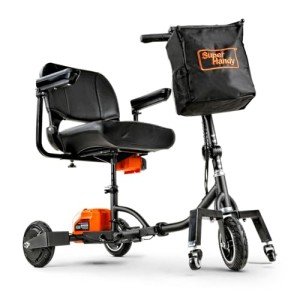Understanding Mobility Aids: Enhancing Independence and Quality of Life
As society continues to age and people increasingly look for methods to maintain self-reliance, the demand for mobility aids has never been more pertinent. Mobility aids, which include a variety of devices created to help people with strolling or moving, play an essential role in promoting mobility, boosting safety, and enhancing general quality of life. This post will explore the numerous types of mobility aids, their advantages, considerations for choice, and answer some frequently asked concerns.
Kinds Of Mobility Aids
Various mobility aids are available, each created to deal with particular needs. The following table sums up some of the most typical types of mobility aids and their features.
| Type of Mobility Aid | Description | Best Suited For | Key Features |
|---|---|---|---|
| Walking sticks | A handheld stick offering support and balance. | People who require very little help. | Light-weight, portable, adjustable height. |
| Walkers | Four-legged frames supplying stability. | Those needing considerable support while walking. | Foldable, some with wheels, added security features. |
| Rollators | Wheeled walkers with a seat for resting. | Individuals requiring mobility with the alternative to rest. | Brakes, baskets for personal products, adjustable height. |
| Wheelchairs | Chairs with wheels for individuals with restricted mobility. | Those not able to walk or needing extensive assistance. | Handbook or powered options, personalized seating. |
| Scooters | Motorized devices for bigger ranges. | Individuals with minimal stamina but requiring independence. | Various sizes and designs, frequently transportable. |
| Crutches | Assistance devices placed under the arms or lower arms. | Individuals recuperating from lower limb injuries. | Adjustable, lightweight, requires upper body strength. |
| Stairlifts | Mechanical devices for moving between floors. | Users facing difficulties in multi-level homes. | Adjustable for different staircases, automated. |
Benefits of Mobility Aids
Mobility aids provide an array of advantages that can considerably enhance the lives of individuals facing mobility obstacles. Some significant advantages consist of:
- Increased Independence: Mobility aids empower people to move freely without relying on others for assistance, therefore improving their self-confidence and self-confidence.
- Enhanced Safety: Using mobility aids can reduce the threat of falls and injuries, especially for older adults or those with balance problems.
- Improved Quality of Life: By helping with mobility, individuals can take part in social activities, attend events, and delight in life more totally, adding to much better emotional and mental health.
- Rehab Support: After surgery or injury, mobility aids supply essential support and stability, assisting in recovery and rehabilitation procedures.
- Accessibility: Many mobility aids are created to be used both inside your home and outdoors, guaranteeing that people can browse various environments with ease.
Aspects to Consider When Choosing Mobility Aids
Picking the appropriate mobility help requires mindful factor to consider of a number of elements, including:
| Factor | Factors to consider |
|---|---|
| User's Needs | Assess the level of mobility needed; think about whether the user requires short-lived or long-term assistance. |
| Physical Limitations | Assess the user's strength, balance, and coordination to determine the best type of help. |
| Setting | Think about the main environments where the help will be used, such as home, outdoors, or specific surfaces. |
| Weight and Portability | Guarantee that the picked gadget is manageable regarding portability and storage, specifically for outside use. |
| Budget plan | Mobility aids come in a variety of prices; consider insurance coverage and offered financing choices. |
| Adjustability | Pick aids that can be adjusted for height and convenience to accommodate development or changing needs. |
Frequently Asked Questions About Mobility Aids
1. How do I know if I need a mobility help?
Numerous aspects can indicate the requirement for a mobility help, such as problem walking or stabilizing, tiredness while standing, or a recent surgery impacting mobility. Consulting with a healthcare professional can provide guidance customized to specific requirements.
2. What types of mobility aids are covered by insurance coverage?
Coverage differs in between insurers, but most offer choices for long lasting medical devices, which usually includes wheelchairs, walkers, and some types of canes. Examine with your insurance coverage company for specific protection details.
3. Can mobility aids be utilized outdoors?
Yes, numerous contemporary mobility aids are created for outside use. Rollators, scooters, and some walkers are equipped with functions for stability and ease of use on numerous surface.
4. How do I preserve my mobility aid?
Routine maintenance involves looking for any wear and tear, guaranteeing that parts such as wheels, brakes, and frames are working correctly, and cleaning the devices as needed. Following the maker's standards is vital for safety.
5. Is there a threat of ending up being reliant on mobility aids?
While some users might become reliant on mobility aids, they are designed to promote independence and mobility. Slowly utilizing a mobility aid can boost self-confidence and aid maintain physical strength and coordination.
Mobility aids are invaluable tools that empower people to overcome physical difficulties, promoting self-reliance and enhancing quality of life. By comprehending prev of mobility aids offered, their advantages, and essential elements for factor to consider, households and caretakers can make educated decisions that best satisfy the needs of their enjoyed ones. With the best assistance, those with mobility obstacles can lead satisfying and active lives, totally free to explore the world around them.

